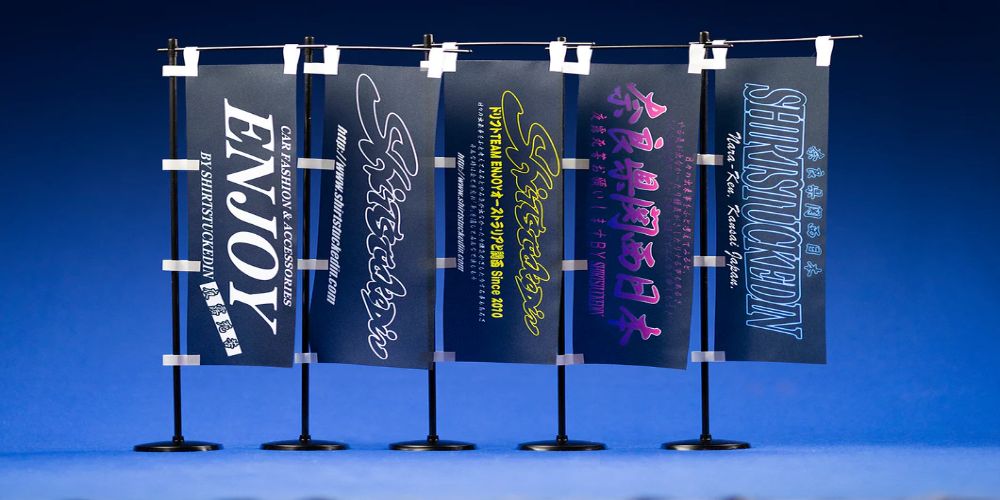In Japan, a nobori flag is a type of wind sock that is commonly seen on the rooftops of homes and businesses. The nobori flag is often triangular or rectangular in shape and is made of cloth or paper. It is attached to a long bamboo pole and hangs down from the top of the pole.
The nobori flag has a long history in Japan and was originally used as a military banner. The flags were used to communicate between units and to identify friend from foe on the battlefield. Today, the nobori flag is still used by the Japanese Self-Defense Forces. It is also flown by businesses and organizations as a way to show support for the community, such as during disaster relief efforts.
How to Hang a Nobori Flag?
- Find a suitable location for your nobori flag. The flag should be hung in an open area where it will not be obstructed by trees, buildings, or other objects.
- Use a tape measure to determine how far off the ground you want the bottom of the flag to be.
- Hammer a nail into the ground at the desired location.
- Take the bamboo pole that is attached to the flag and insert it into the hole.
- Make sure that the flag is hanging straight down from the pole. If it is not, adjust it until it is straight.
- Your nobori flag is now ready to fly!
Significance of Nobori Flag
Throughout the centuries, flags have served to declare a nation's victory or defeat, identify its citizens on the battlefield and commemorate significant events in time. One such flag is known as the Nobori, traditionally flown in Japan since ancient times to mark important moments. The nobori is a large, rectangular flag measuring around seven feet long and four feet wide. It has long vertical stripes of different colors arranged in three patterns - ji-ni-ichimotsu or two-patterns. While usage of the Nobori varies by region, it is commonly seen during religious ceremonies and traditional festivals.
Additionally, it is often raised near coastal areas and at construction sites to bless the water or land being used for operational purposes. Perhaps most significantly, it is used in sumo wrestling tournaments to declare victory when one wrestler lifts the flag over their opponents head. Whether strongly flapping in windy conditions or gently swaying at rest, tthe Nobori plays an integral part symbolizing Japanese culture and tradition today and allowing us to look back with reverence on where we have come from. With this comes a shared responsibility of respecting the significance of what it represents - that celebrating successes are just as important as honoring our past.
Conclusion:
If you are interested in flying a nobori flag of your own, follow the instructions above. Be sure to choose an appropriate location for your flag, such as an open space that is not obstructed by trees or buildings. Once you have chosen a location, use a tape measure to determine how far off the ground you want the bottom of your flag to be. Then, hammer a nail into the ground at that location and insert the bamboo pole into the hole so that the flag hangs straight down from it. Your nobori flag is now ready to fly!


